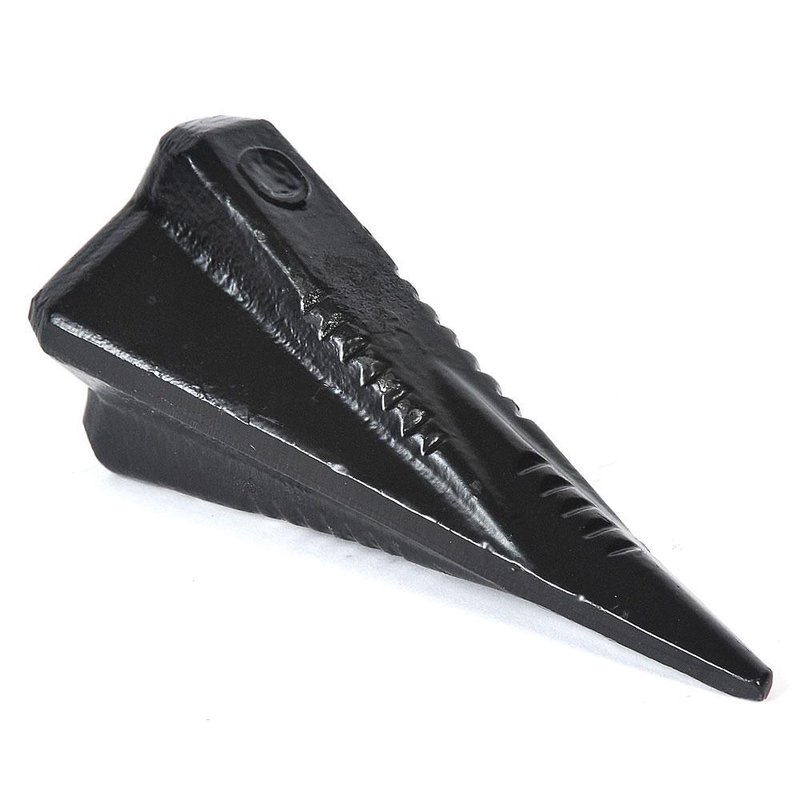I’m a solo woman farmer living in a yurt that is heated with wood. My life is a pretty idyllic one—getting to live and farm in a beautiful spot near Decorah, Iowa in the driftless region is not something to be taken without buckets of gratitude. There are some things that are hard about my life, too, as is the case in all lives. There are daily chores to be done that sometimes become a slog. There’s the inevitable challenge of creating a sustainable balance between my social life, personal life, spiritual life, and work life. But one thing that is in many ways pure joy is the chance to cut and split my own wood.
It’s true, I could buy wood for my stove, cut and split by someone else or by a machine. I could conceivably con some man into doing the work for me by baking cookies for him or something. And it’s true, splitting wood takes time and it takes energy… but oh is it ever worth it!
Splitting wood requires physicality, quick motion, follow-through, and oomph. These are things that I believe all able-bodied people have, but in all honesty, they’re often attributed to men, or acknowledged in men more than women. I worked for a friend of mine this spring and one of the things we did was cut up a few oak trees and split them for firewood. Most of the time, he did the cutting with a chainsaw and I did the splitting with a maul. I remember when there was a gathering at his house, and people were admiring the beautiful piles of split red oak in the woods. “Hannah split it,” he said. “REALLY???” said the people. I was proud to be able to say I had done it, but not without feeling a little strange that, by virtue of my gender, a lot of people didn’t expect me to be capable of such a thing.
So let me say: women, you can do it! You might love it like I do, that feeling of power and release of energy. I want to say a little bit here about how you can learn to split wood, but one of the most important things is simply that you give yourself unpressured time to practice and teach your body what it takes.
The maul that you use is important: don’t use one that is too heavy for you to wield! There are lots of different weights, and even through heavier ones split things more easily, it’s not easier if you have to strain to lift it.
An important thing to note: you are not cutting the wood as you would with a knife. Your success doesn’t actually have much to do with the sharpness of the maul, as it would with the sharpness of an axe cutting down a tree. You are splitting the wood with the grain, and it is quick blows of force that will cause it to split along natural lines. So, as you practice, you will be wanting to practice bringing the maul down quickly and decisively with a lot of follow-through. Follow-through means that you will wield the maul as if you are intending to hit the ground with it, even through the top of your piece of wood is 16 inches off of the ground. If you move to hit the top of the piece of wood, you will and the maul will bounce off, but if you move as if to hit the ground through the piece of wood, a split is much more likely.
When I’m getting the feel of a new maul, I start with it resting on the wood, where I want it to hit. I’m right handed, so I raise it up above my head with the end of the handle in my left hand, and my right hand up near the head of the maul. Then I bring the maul down while bringing my hands closer together by sliding my right hand toward my left. This generates a lot of force and speed. And usually my blow ends up where I intended it to be!

Before you start, it’s nice to look at your piece of wood and guess where it will best split. If there’s a knobby part or branch, I usually don’t try to split it there at first. I try to split off chunks that have relatively smooth grain all the way down, and I try to bring my maul down parallel with the rings. I often end up splitting off a chunk of wood that is wider than I want it to be, so I split that piece in half perpendicular to the grain. In your experimentation as you practice, take note of where it splits easily, where it takes a few tries to split, and where you can’t for the life of you get it to budge. These are valuable learnings that can help you know what not to bother with, and how to split most efficiently based on the wood you have.
Every kind of wood looks and feels different. I’ve noticed that red oak, maple, and black walnut split really nicely and easily. Elm, on the other hand, I haven’t figured out at all and can’t do without a wedge. One of the other pleasures of splitting wood is getting to know more intimately how wood works.
So, go to it! Split some wood and get your blood flowing with energy and power… and then warm yourself again by the fire!



































This article is so eloquently written, interesting, informative and straight to the point! Thank you! I am excited!